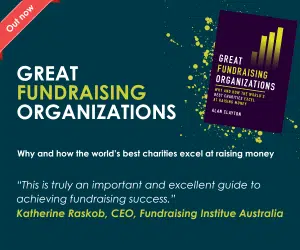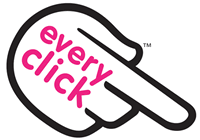You've Still Got Mail, says Niroo Rad
Changes to door drop regulations provide a real opportunity for fundraisers to embrace the internet, argues Niroo Rad, managing director of ASI.
The Direct Marketing Association’s (DMA) plan to introduce a mailing preference service for door drops have some fundraisers worried. Door drops – or un-addressed postal mail – are growing in popularity, reaching more than 26 million UK letterboxes every year.
For fundraising organisations, door drops can provide a great way of recruiting donors. More tantalising for charities still are findings from the DMA that show 79% of people keep, read or pass on door to door material, while 48% of consumers have responded to a letterbox item.
Advertisement
Charities fear that if consumers can opt-out of door drop mail – as they can do for addressed direct marketing communications – their ability to reach potential donors will be hampered. But far from being alarmed by the DMA’s plan, fundraisers should see it as an opportunity to reach their audiences better with more targeted campaigns using digital marketing.
To date, most charities have failed to take full advantage of the digital channel as a way to target donors. Compared to some of the more creative websites that can be found online, many fundraising websites can appear uninviting, out-of-date and uninspiring to potential donors. The proposed changes provide a real opportunity to persuade a charity’s trustees that it is now time to invest properly in digital marketing and create a forum where they can really interact with their donors.
While some people are happy to receive direct unaddressed mail through their letterbox, others find this method intrusive and an environmental waste, and would prefer to be reached through other channels. What’s more, the use of the Internet is increasing every day – the Office of National Statistics reports that an estimated 13.9 million households (57% of the UK population) access the Internet from home and in September 2006, three out of four connections did so using broadband – making it a channel that really cannot be ignored any longer.
People tend to assume that the older generation is less receptive to marketing online. But with more and more people in their 50s and 60s using the Internet this opinion is no longer valid. Those with an emotional connection to a cause, regardless of their age, will make a donation. If a fundraising organisation does not have a presence online to make it easy for them to donate at the moment they make that connection, it represents a huge opportunity lost.
The fact that more people are online now isn’t the only benefit. Online marketing can also reduce a charity’s operational costs, as the total cost of ownership of running a digital campaign is considerably lower than more traditional means of marketing. More importantly, people like being given a choice in how they receive information; a consideration fundraisers need to bear in mind when putting together their marketing strategy.
Fundraisers need to make their website an extension of their organisation and brand. The trick is how quickly an organisation can improve its website while ensuring that it’s robust enough to manage donations online and target consumers accurately.
The first step is to consolidate all donor information into one central database, as the potential for sending out a message twice to the same person is much more likely when delivered by email. Charities also need to be more proactive in getting people to register their email address on the website and opt in to receive regular information from the organisation. Failing that, a short online survey can reveal an enormous amount of profiling information about the type of donors and prospective donors that visit a charity’s website.
This information can be used to fine-tune messaging to suit the psychology of the demographic that the charity is trying to appeal to, and will considerably raise the effect of any online marketing campaign. Perhaps more crucially from a marketer’s viewpoint, online marketing offers invaluable market intelligence that simply can’t be achieved through any other medium. Good fundraisers are good marketers – and good marketers always need feedback, such as how many people read the email message, what time of the day most messages are read and whether a message is passed onto other people. With digital marketing, all this information can be fed back to the fundraiser automatically and in real-time.
Whether the DMA decides to offer a mailing preference service for door drops or not, the Internet offers an exciting and relevant way of targeting donors through a medium that people are becoming increasingly comfortable with.
Ultimately, fundraising organisations need to embrace digital marketing or risk losing valuable donations to more savvy charities that are already one step ahead online and on-course for success.
Niroo Rad started his career at a start-up software company developing and implementing financial management systems. Following the sale of the business in 1985, he started an Apple Macintosh dealership that quickly became the UK’s second largest Macintosh reseller. Niroo then joined Blyth Software where he led the company’s expansion into seven European countries and the US and was one of the driving forces behind its successful floatation on the NASDAQ market in 1989.
Niroo then went on to found Caspian in 1990 where he successfully developed and implemented the Caspian suite of CRM software in UK. The relationship between ASI Inc and Caspian began in 1996 and culminated with ASI acquiring Caspian in April 2004, as part of its global expansion programme.




